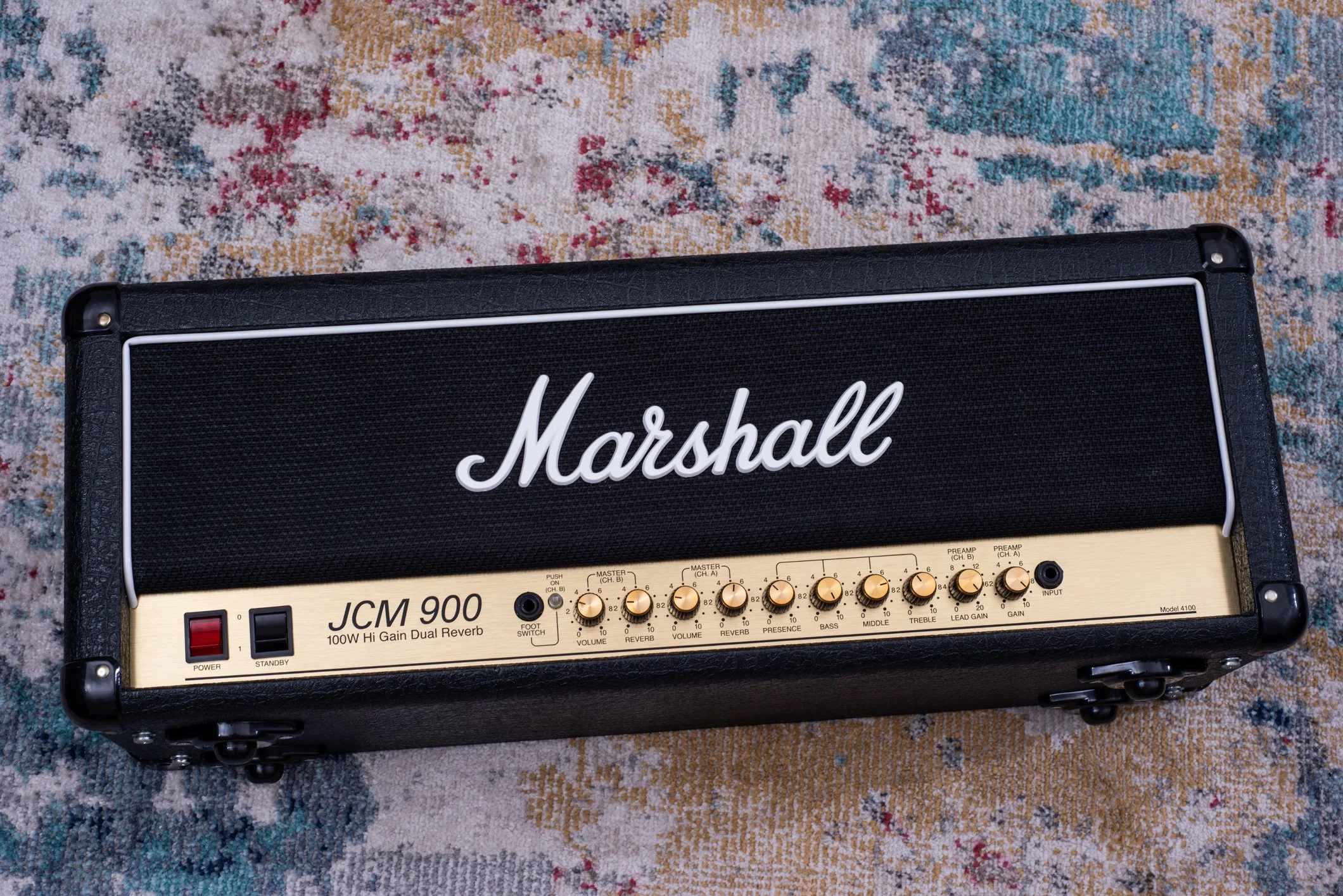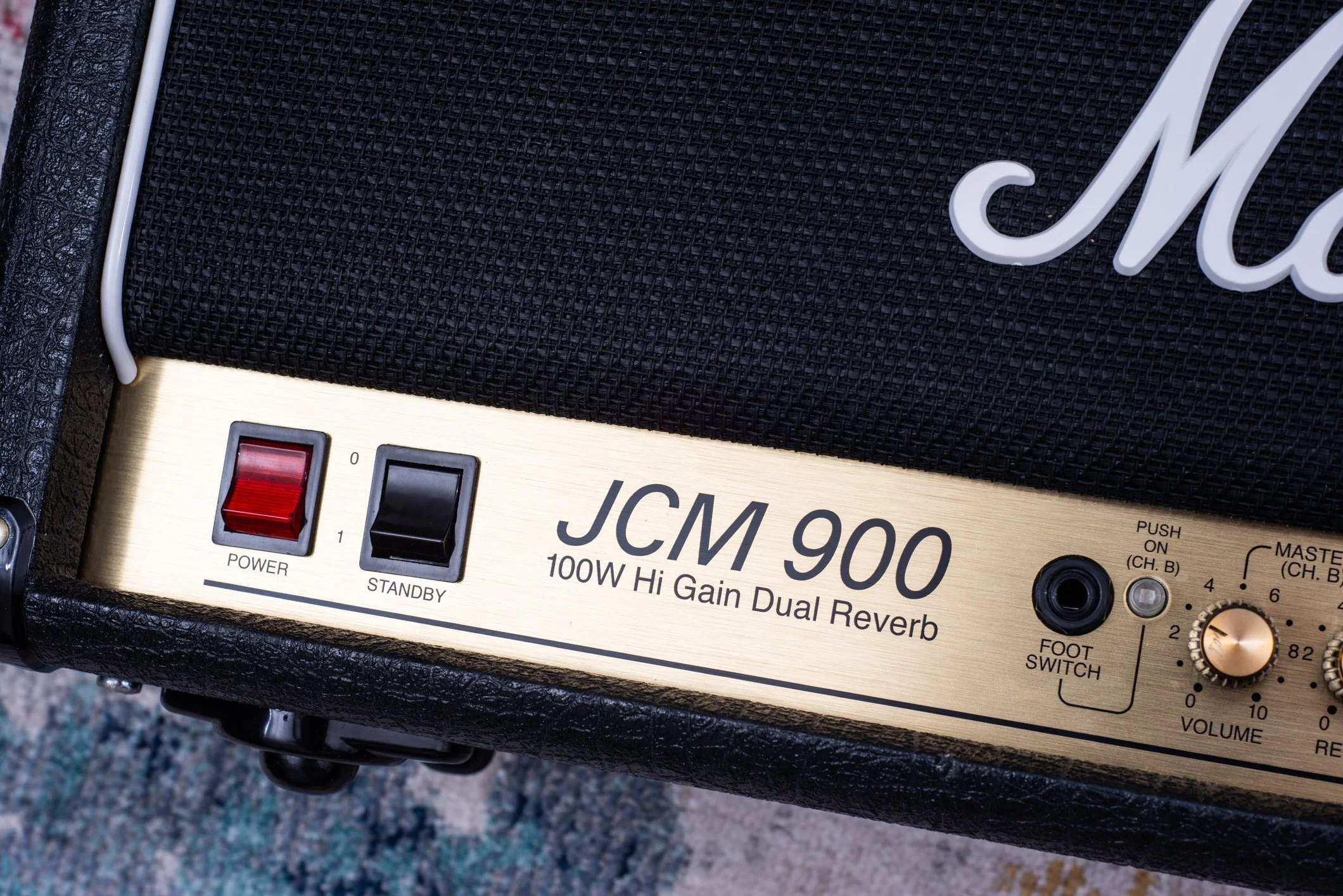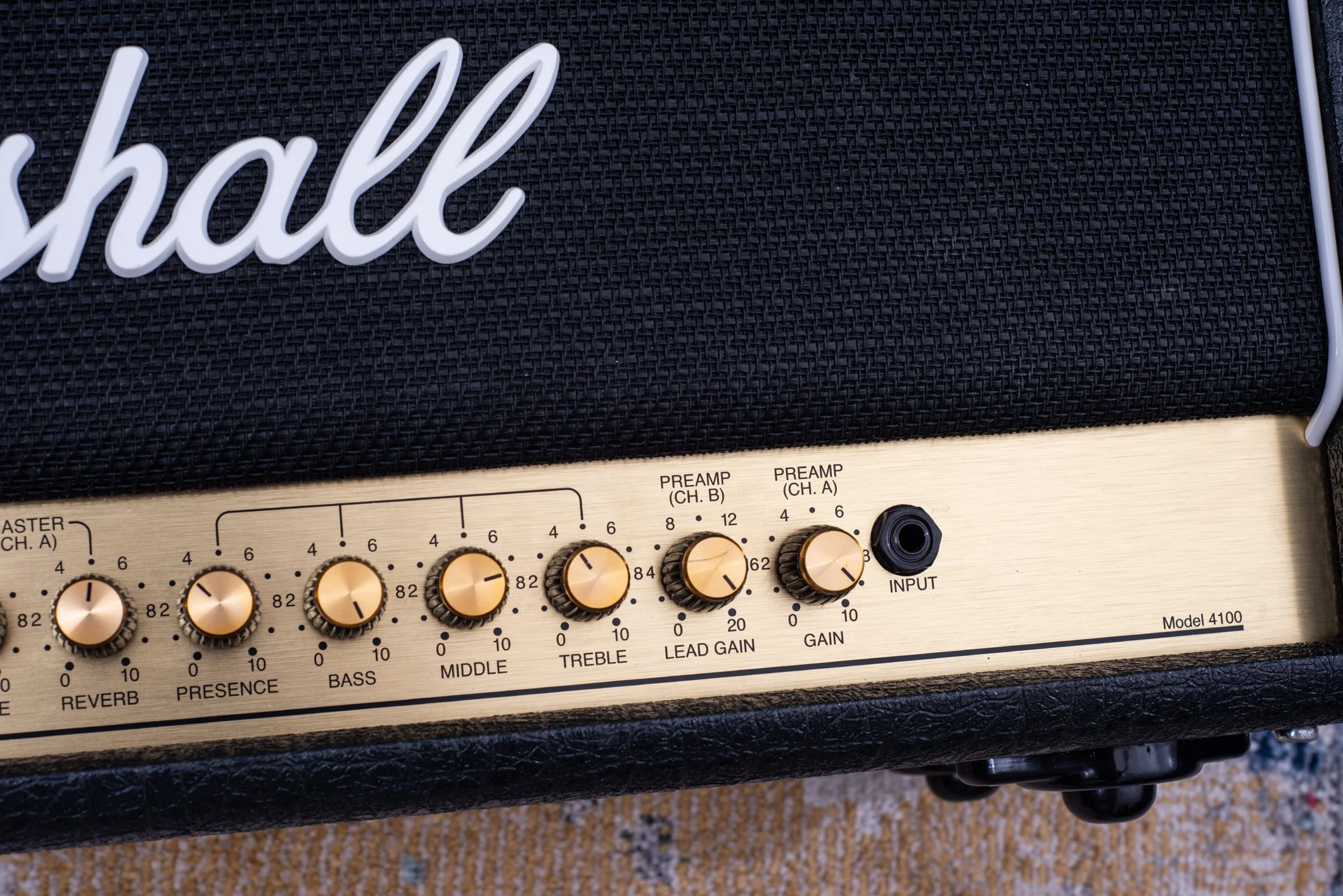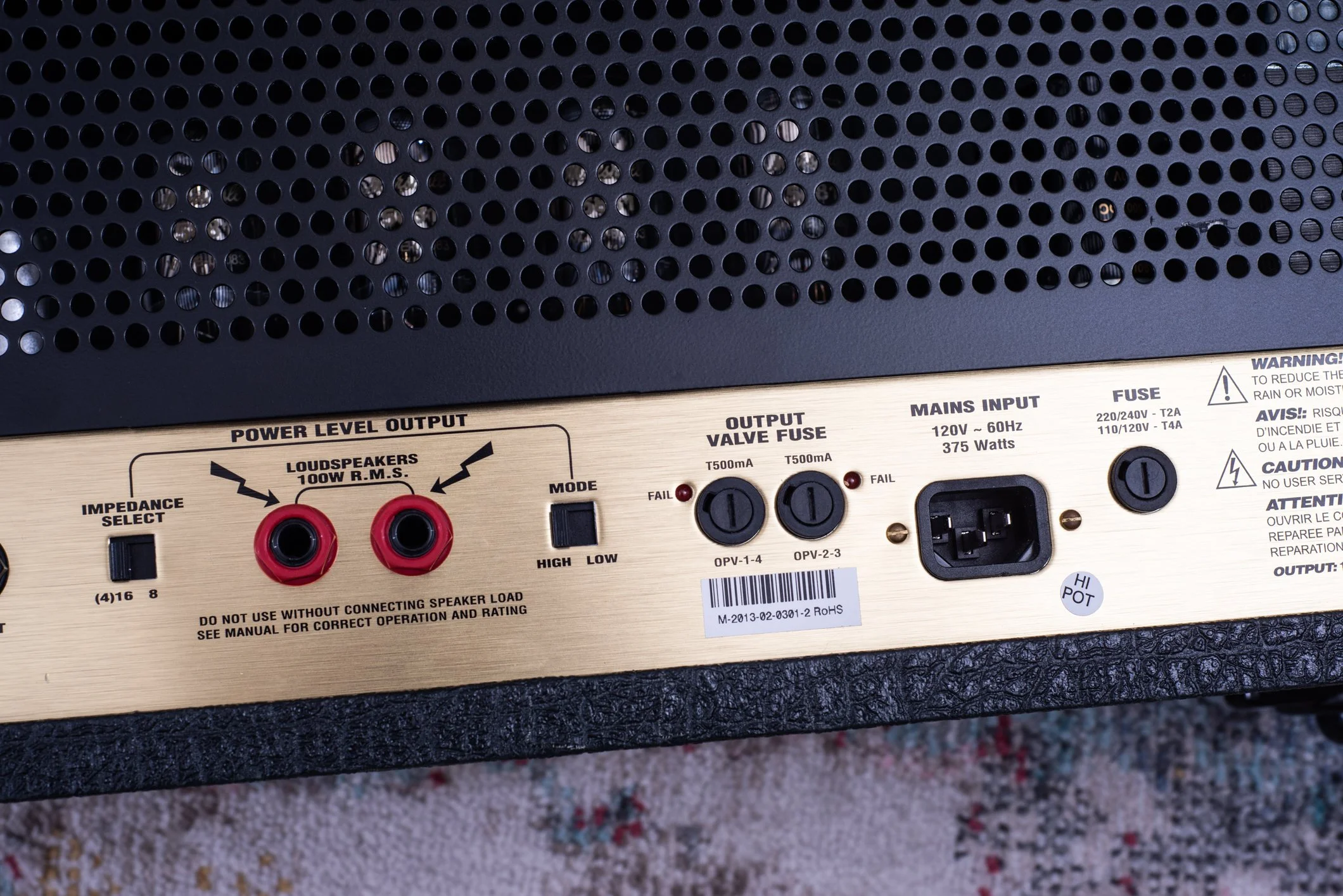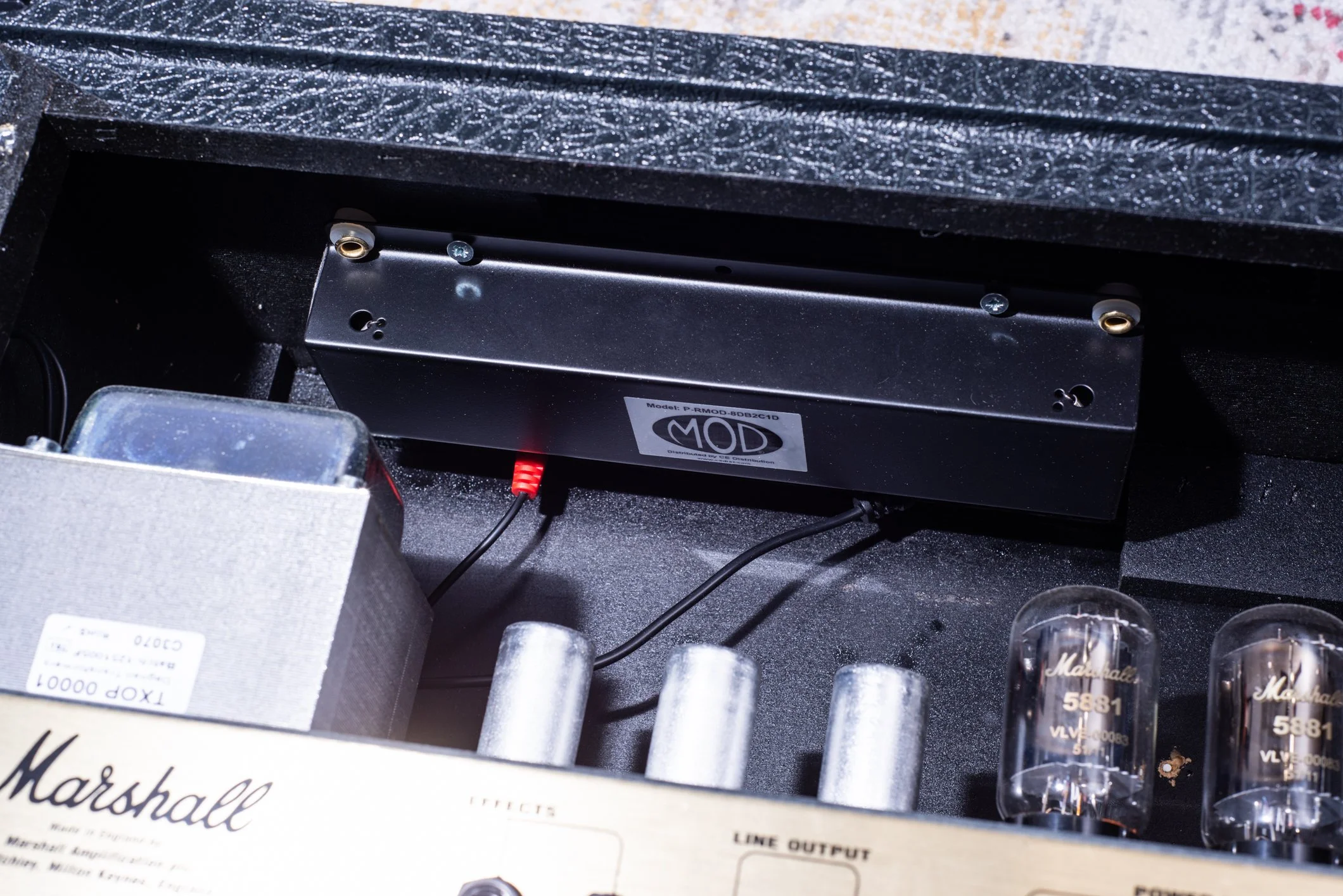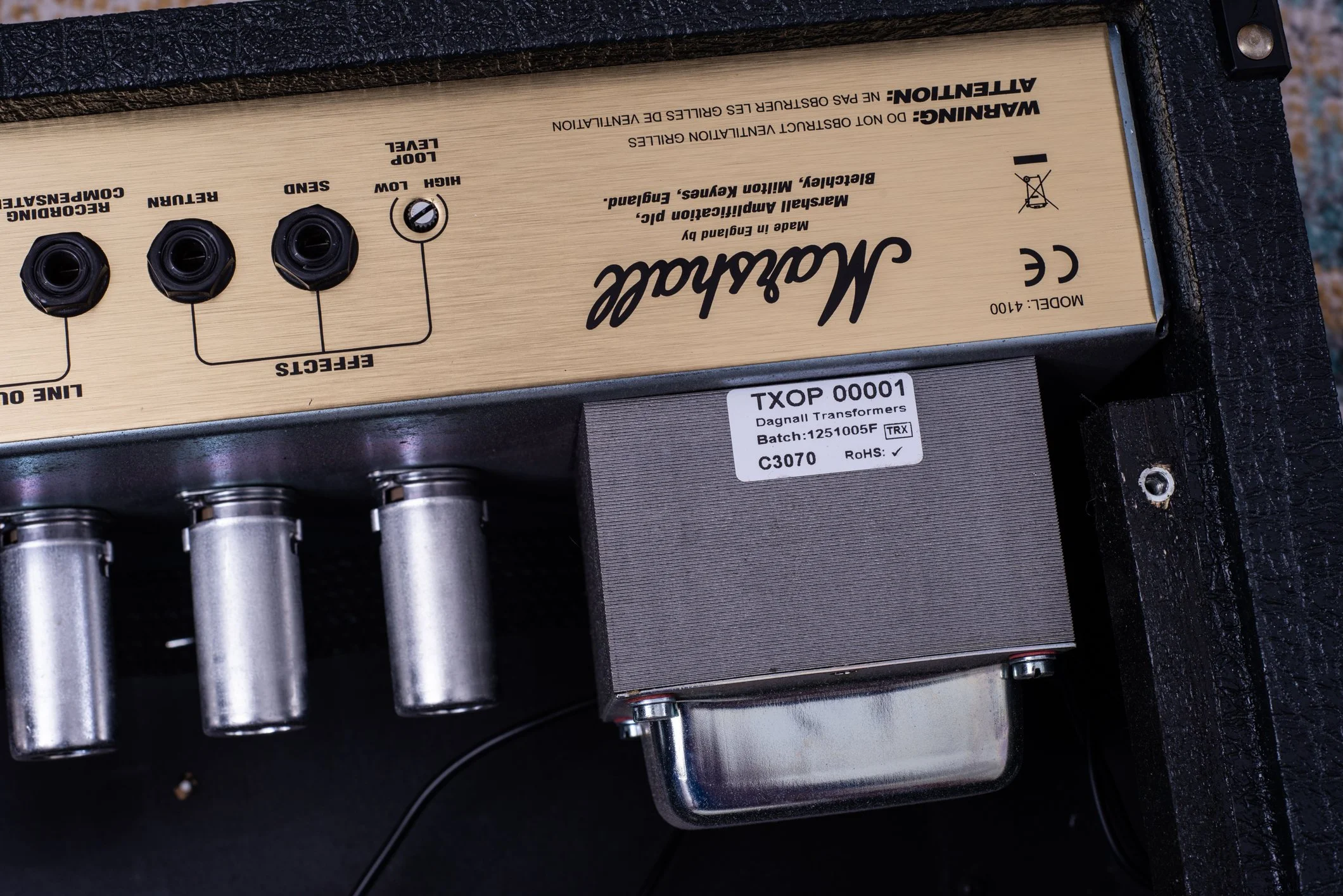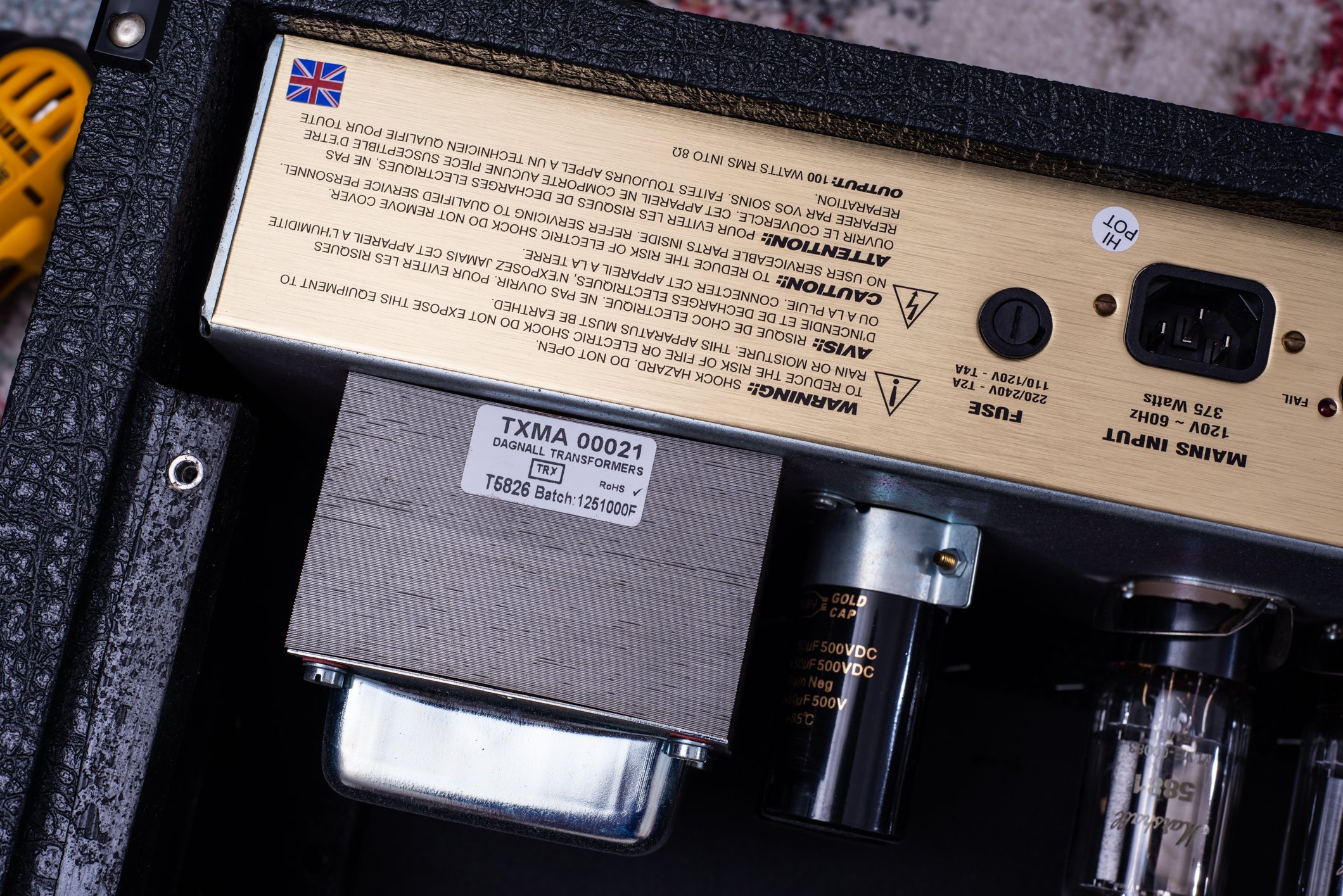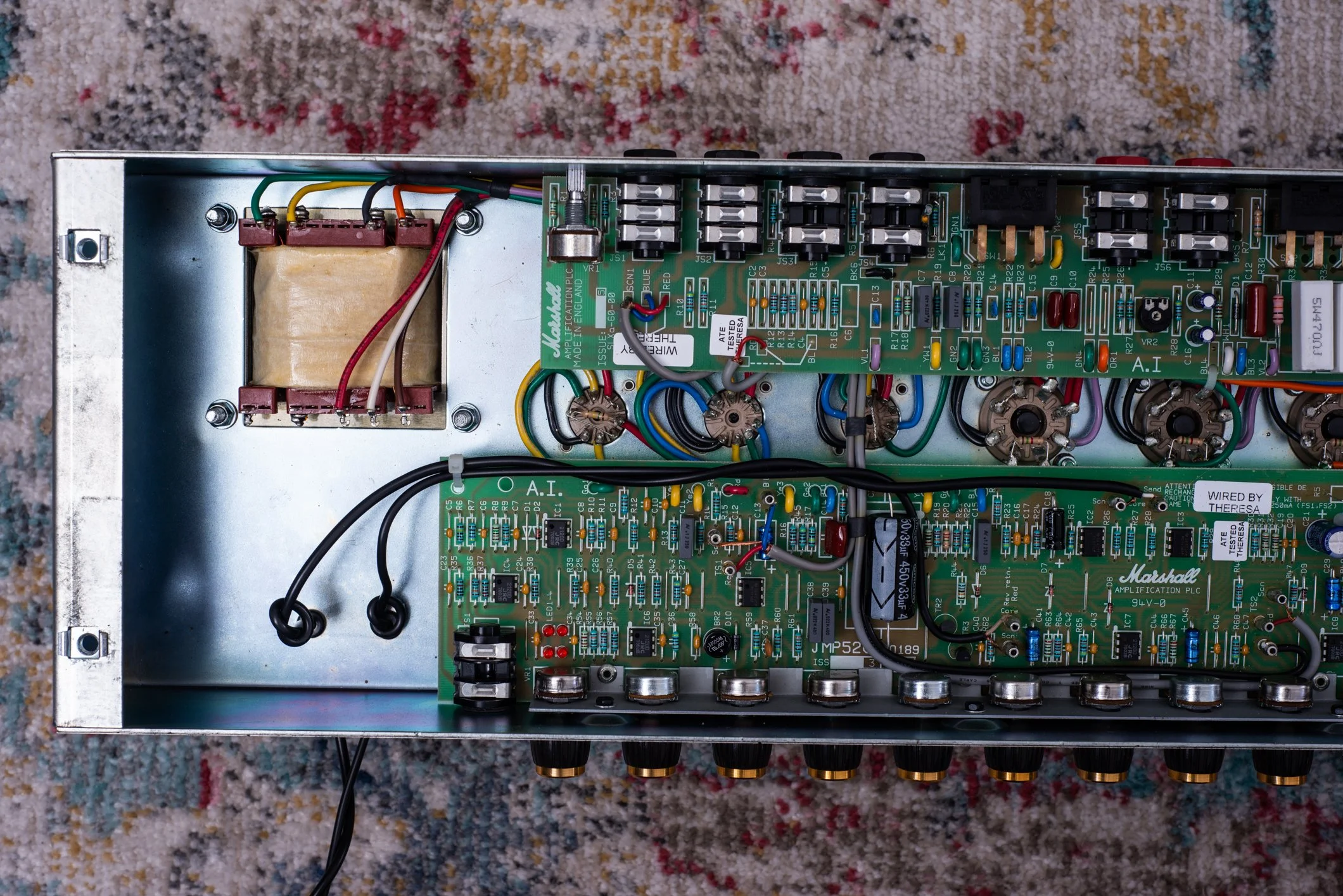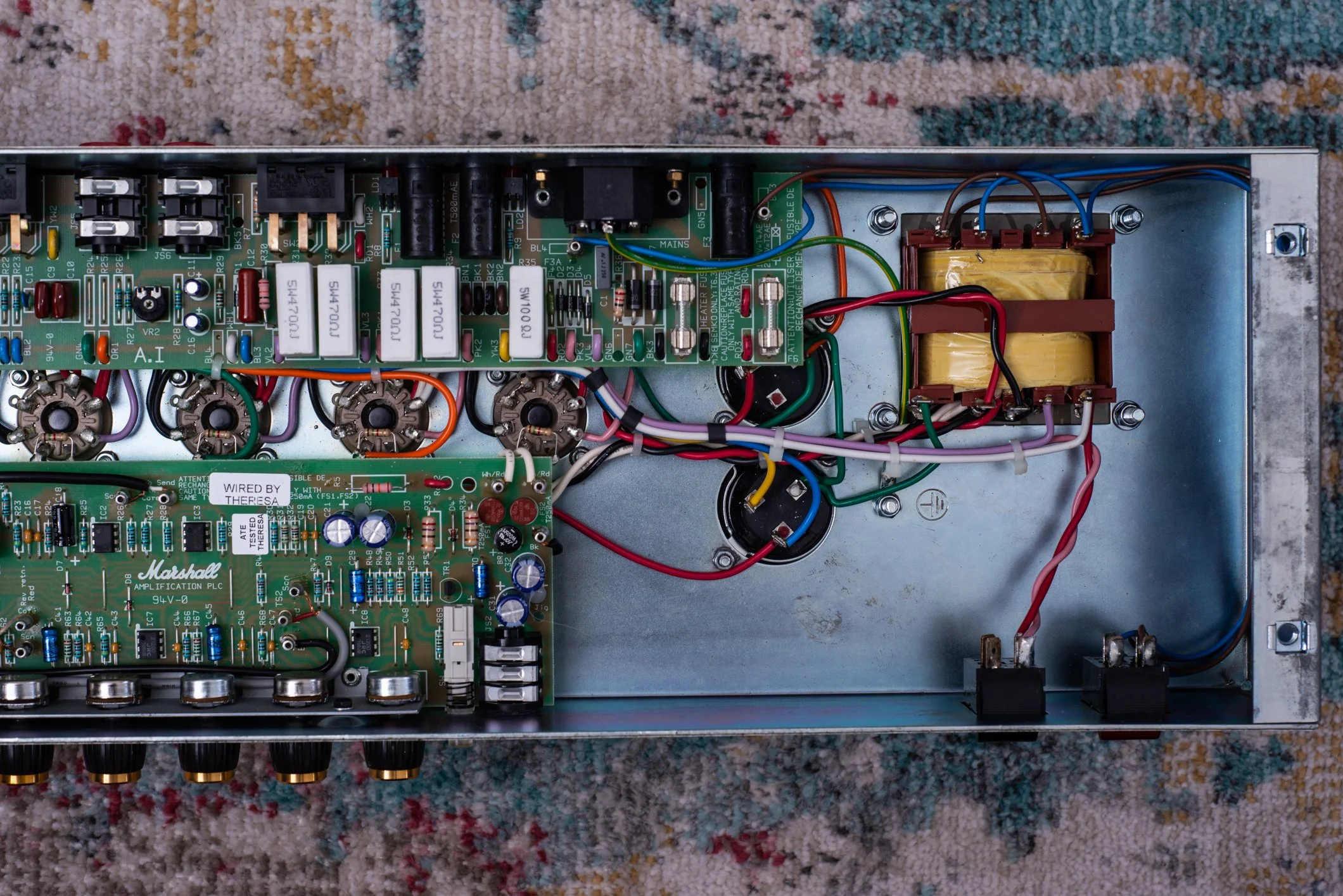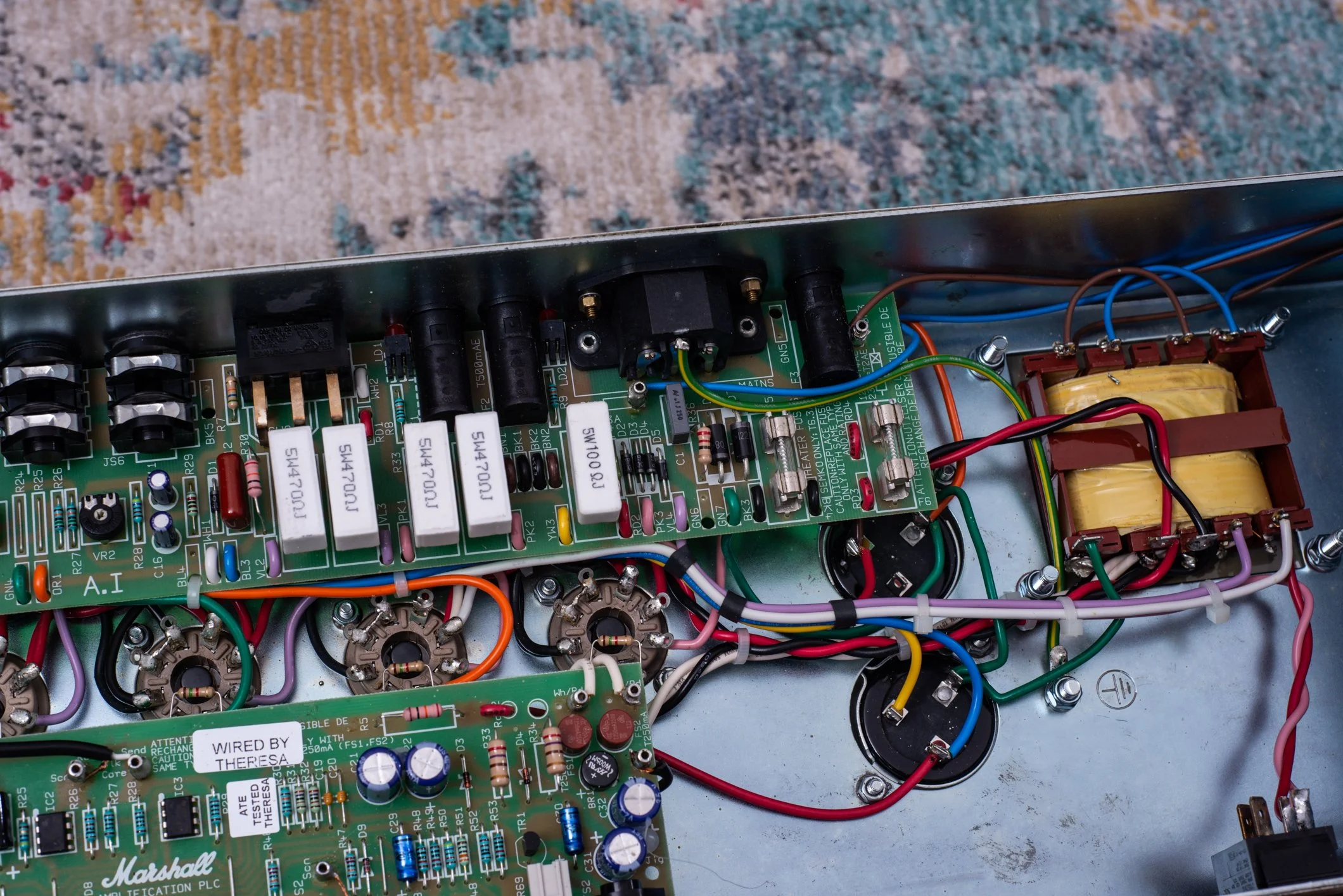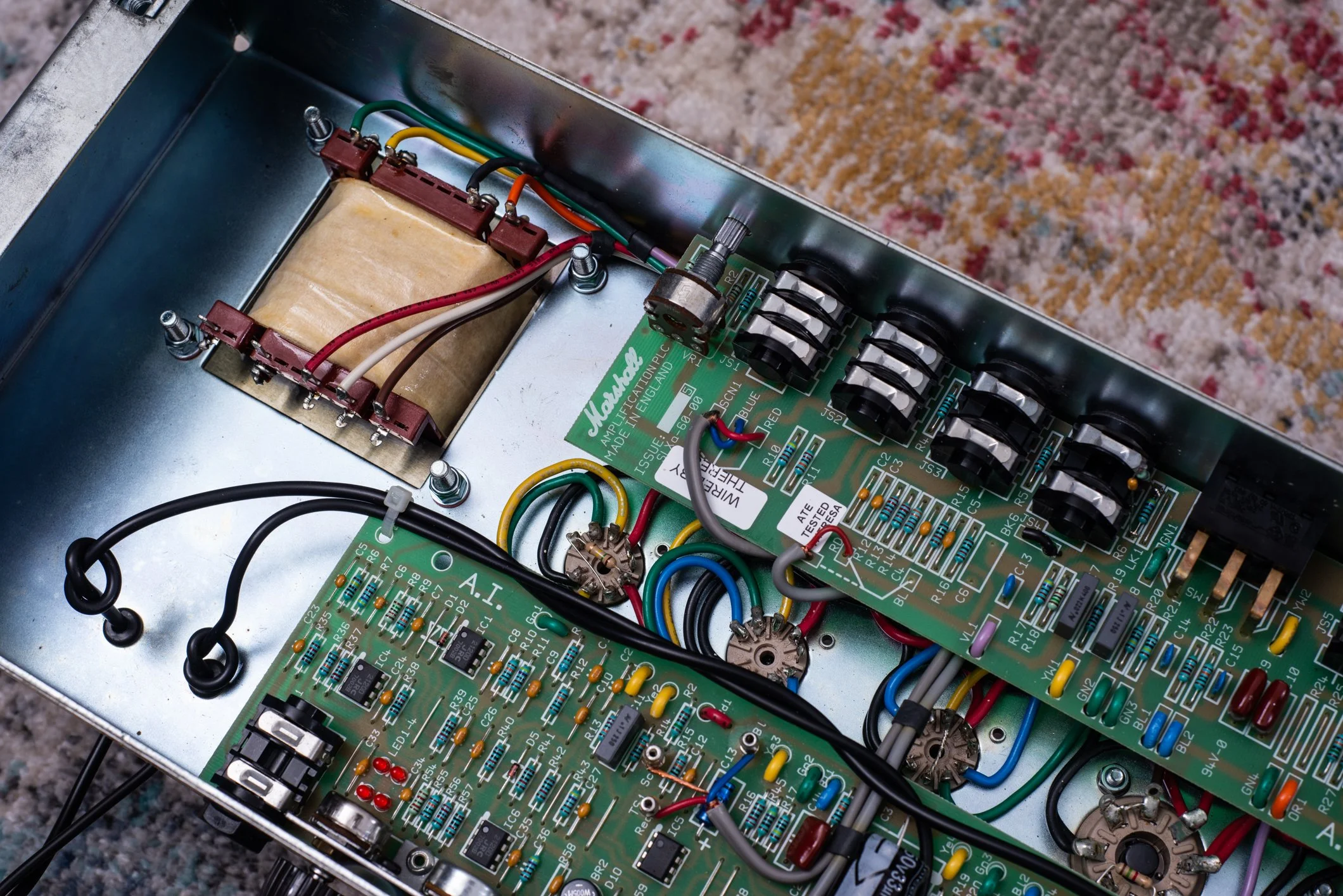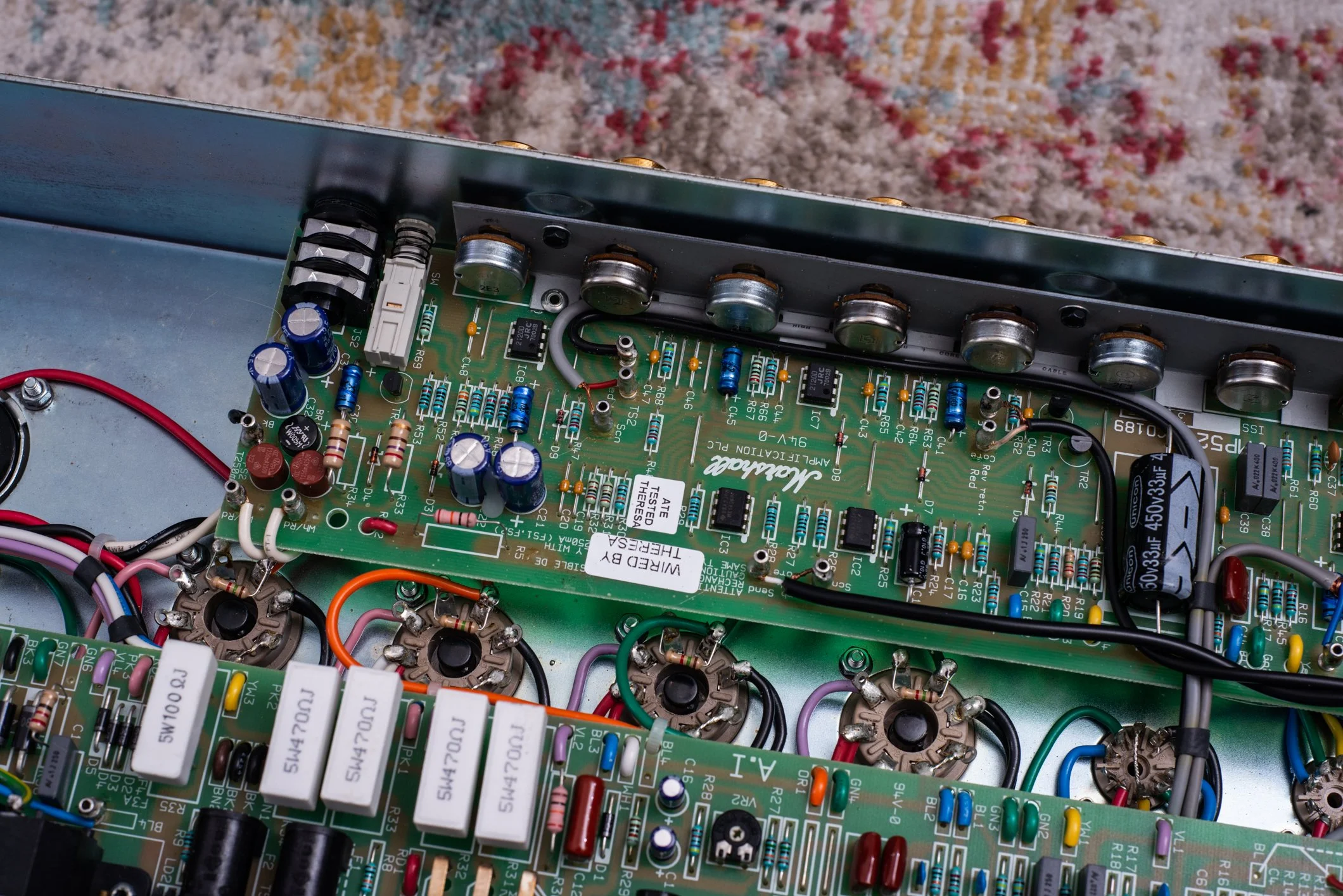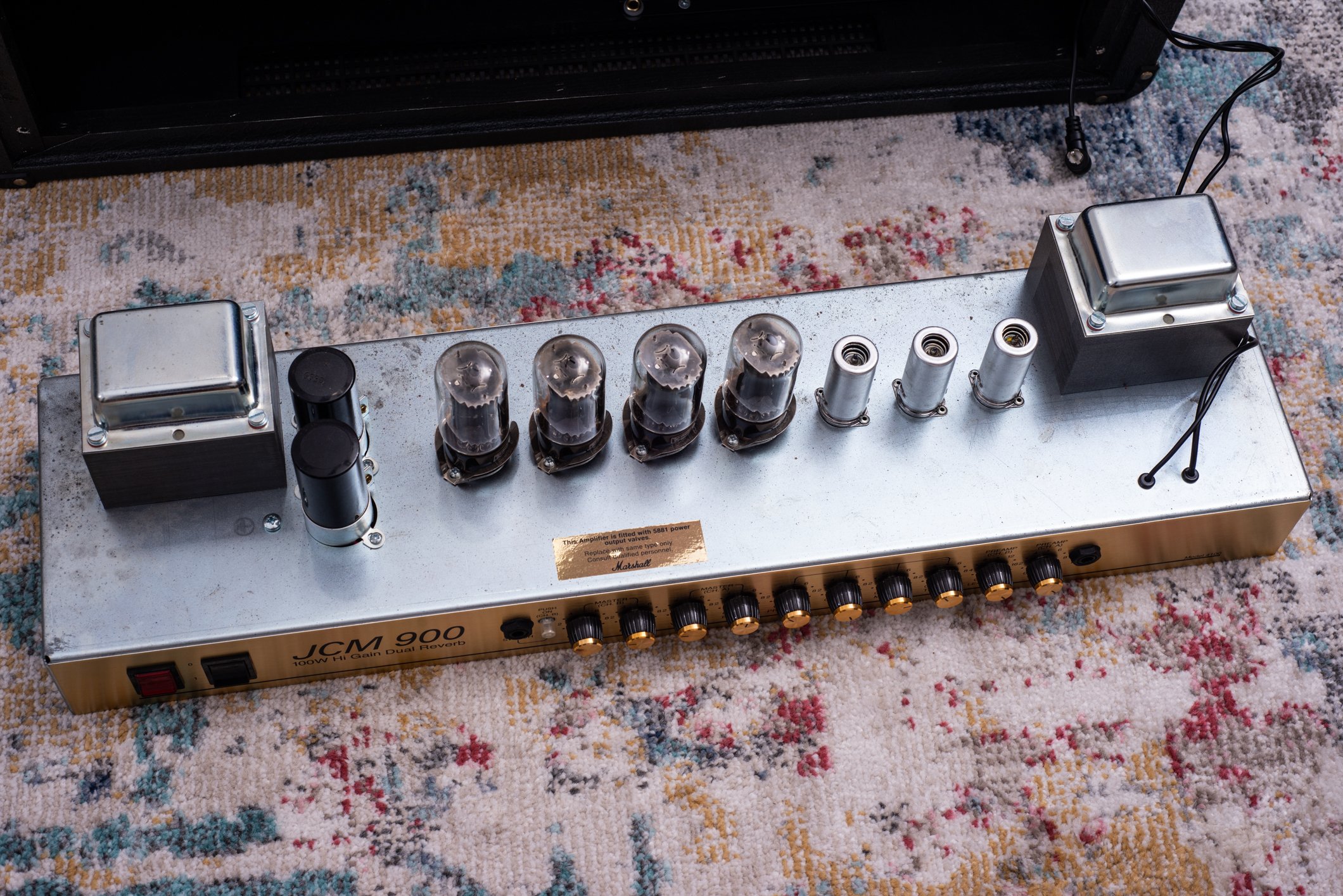2013 Marshall JCM900 4100 Dual Reverb Reissue
Specs
2 Channels
100w Output
4x 5881 Power Tubes
3x 12AX7 Preamp tubes
Serial effects loop
Spring reverb
$2999 in 2023
Overview
The JCM900 Dual Reverb came out along side the Mark III amps in 1990, succeeding the JCM800 series. This amp was more of a continuation of the split-channel JCM800’s like the 2205 and 2210s, and offers a similar design with two separate channels. However, instead of a “normal” and “boost” channel like those amps, which had separate EQ sections, the 900 Dual Reverb shares the same 4-band EQ section across both channels, which does limit it somewhat. Each channel does have its own preamp gain, master volume, and spring reverb mix control, and a 2-button footswitch can be used to change channels or turn the reverb on and off.
Channel A is a more classic Marshall style tone, capable of some overdrive by not overly gainy even at the highest gain setting. Channel B’s gain control goes all the way up to “20,” a nice way to indicate that there is much more gain on tap in that channel. They are both voiced very similarly, with maybe a hair more of a mid scoop on Channel B, but if desired they can both be dialed in to sound very close, which can be useful for having a rock rhythm tone, and then a bit more gain on your lead sound. Alternatively, one channel can be dialed in to sound cleaner while the other is the drive channel, but with the shared EQ it can be hard to find a setting that isn’t a compromise in some way.
The most divisive bit of this amp is the preamp design, which is almost entirely Op-amps and clipping diodes, which are used to generate more distortion. In fact, this amp only has one tube gain stage, the rest of the drive sound is all solid state components. This is quite a bit different from the JCM800 series amps (all of which had 3 tube gain stages, even the 2205/2210 models) or even the JCM900 Mark III model released at the same time. This seems to create a lot of confusion, since the tones you can get from a Mk III are drastically different from this amp, even though they both carry the “JCM900” naming. The Mark III is sometimes called the “Dual Master,” which sounds similar to “Dual Reverb” so people may have played this one, hated it, and thought that all JCM900’s sounded like this - or heard that JCM900’s were solid state and just repeated that with disdain.
In my opinion, despite the mostly solid state design, it is still a great sounding amp. However, I don’t think it’s the amp I’d pick for a classic Marshall sound, and especially for the price of a new reissue ($3k) it’s hard to recommend unless you are looking for a specific sound this amp supplies. For me, that specific sound is 90s punk, where the bright aggressive nature of this amp with its extra grit and gain is perfect. On the other hand, used JCM900’s are plentiful so there’s plenty of opportunity to grab one on the cheaper side. This basic design, two channels with a shared EQ section, also evolved into the later JCM2000 Dual Super Lead amps which came out in 1997. The JCM2000’s went back to a tube preamp design without diodes, and have even more gain than these JCM900’s, so that’s probably the more versatile option for most players. Still, this amp is a great snapshot of a somewhat strange period in Marshall history, alongside the 2xxx model amps (Mk III and SLX) and the 6xxx amps (6100 anniversary series) which blazed some new ground - at the time, these were pretty groundbreaking tech but became quickly outclassed by the many fantastic boutique builders just a few years later (just take a quick look at the amazing amps that came out in 1992 for example). I’d actually point to this amp as one of the reasons why we have a booming amp modding and building scene even today, because amp makers moved to fill the void left when Marshall came out with this series of amps, which used cheaper components, smaller transformers, PCB-mounted pots, and other cost cutting measures. Doing things the “old” way is one of the biggest selling points not only for smaller amp builders, but even for reissue Marshall amps like the 2203X and 1959X.
